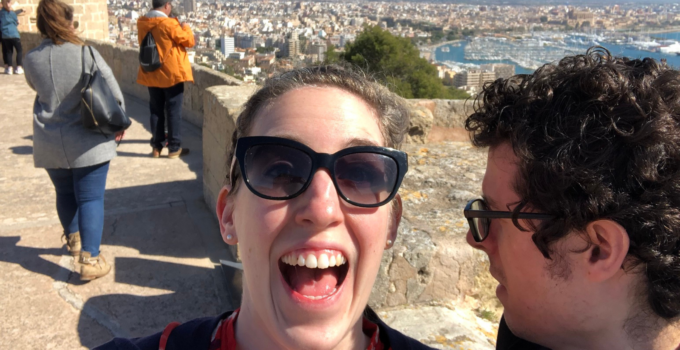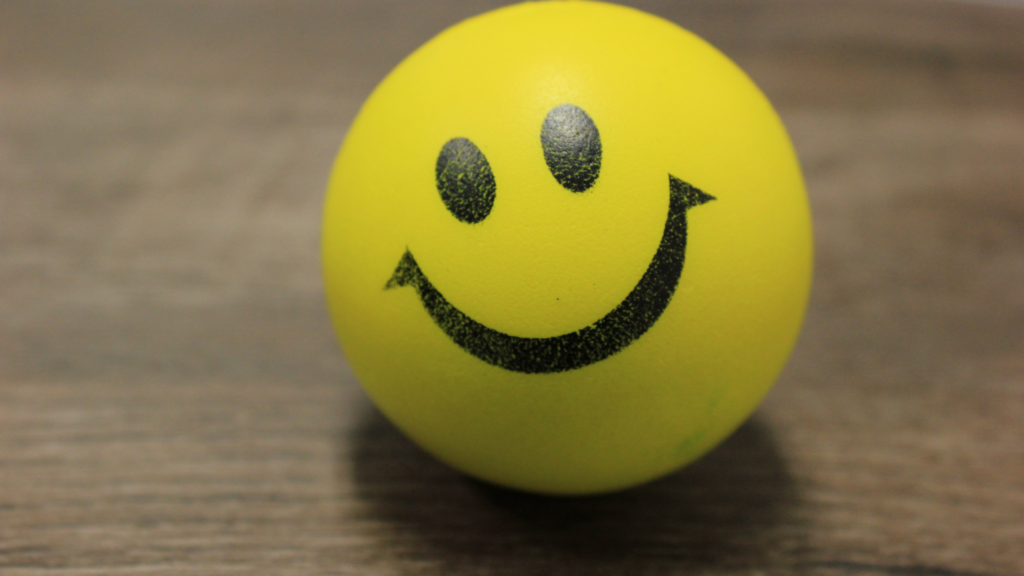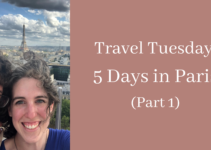Back in 2018, Yale professor Laurie Santos offered a new course about how to be happy and the science of well-being. I remember when this hit the news and I was immediately interested. I’m a naturally happy person, but who doesn’t want to increase their life happiness? To my benefit, this course is now offered for free on Coursera. When I finished the course on Learning How to Learn, this was the next on my list. I’ve just finished it up and I have to say, I learned a LOT.
What’s Covered in “The Science of Well-Being”
I was surprised to find that this was a 10-week course (most Coursera courses are 6 weeks or fewer). But it’s jam-packed and worth the time. The videos are of Santos in her own home, presenting the information to a small group of Yale students. She presents the topics and backs each point up with at least one relevant study. She covers the following topics:
What we think will make us happy, won’t
Santos begins the course by presenting studies that show that the things we think will make us happy, won’t. Those things are: a good job, a high salary, cool stuff, true love, a perfect body, and great grades (remember, the context is speaking to Yale students). One by one, she presents studies that disprove that any of these things will make us happy. And to get ahead of folks who might think themselves differently-motivated than the subjects of these studies, she continues with…
Why these things don’t make us happy
The next subject Santos covers is about why traditional achievements don’t make us happy. Turns out, our brains just aren’t wired to be satisfied by those things. And there are four reasons – what she calls “annoying features” – that make that so.
Our intuition is often wrong
This is the lynchpin to this course – a term called “miswanting”. Turns out, our brains are horrible at correctly predicting what’s going to make us happy.
Our brains are bad judges of reference points
Our brains don’t think in absolutes. Every assessment that our brain makes is in reference to something else. Most of the time, that reference point is someone else. One of the examples she uses for this point is Olympic medalists. Turns out, bronze medalists tend to be happier than silver medalists. The reason is the point of reference. The silver medalist will compare themselves to the gold. In some cases, they were within a hairs’ breadth of winning gold. But the bronze medalist? Their point of reference is not medaling at all!
Our minds are built to get used to stuff
This is where hedonic adaptation comes in. Our brains are phenomenal at getting used to where we are. But that means that, once we get used to stuff, we’re going to want more.
We are unaware of our brain’s hedonic adaptation
This might seem like splitting hairs compared to the previous point, but it’s important to split this out. When we make predictions about the future, we assume we will be happy for a long time when we reach our goals. We also assume that, if something bad happens, it will affect us for a long time. Neither of these things are true. We overestimate both the intensity and the duration of the effect of events (especially negative events). And we do that because we don’t realize that our brain is going to adapt to what happens. It’s just what it does.
So…How Do We Take Advantage of the Science of Well-Being?
So far, I’ve quickly covered the first 3 weeks of this 10-week course. The remaining 7 weeks cover how we can thwart the annoying features of our brains, how we can want the right parts of things that don’t make us happy, what we should want instead, and how to actually incorporate these things into our lives.
If I summarized all that, I would be stealing the benefits of taking this course (along with Santos’ excellent presentations), so I won’t. Instead, I will highly encourage you to check out the Coursera course The Science of Well-Being and leave you with…
Katherine’s Top 3 Takeaways from the Science of Well-Being
Most of my takeaways stem from what I learned in the parts that I haven’t described in detail, so you’ll get a bit of a sneak peek into the content of the rest of the course. You ready to hear what I learned?
The perfect job isn’t going to make me happy
If you know me personally, I’ve been struggling over the past year and a half with finding a job in Berlin. It’s made me deeply unhappy at times to not have full-time employment. Turns out I like my career and have tied a chunk of my self-worth into it. BUT. I now have a new perspective to turn on that problem in my life. See, the perfect job isn’t going to make me happy (she has plenty of studies to prove that). Instead, what I’m craving is flow and a chance to use my signature strengths.
Here’s the deal. Research suggests there are two aspects to an immensely satisfying job. One is flow. When you get into flow, time melts away and you focus completely on what you’re doing. This is an immensely satisfying state of being.
The other aspect is using your signature strengths, which are aspects of your personality that are essential to who you are, effortless to employ, and energizing to use. You can learn more about them here.
When you have a job that leverages your signature strengths, and the work has opportunities for you to get into flow, you’ll be deeply happy in that role. For me, one of my signature strengths is teamwork, and I get into flow when I work with data. Those are the two aspects of working that I miss most. And until I’m employed again, I will find ways to use signature strengths in my day-to-day life.
Why Meditation Works
Y’all, I don’t understand meditation. I’ve tried to pick up a practice off and on, and I know (and believe) all the studies that show that it’s beneficial to long-term well-being, but…I don’t get it.
But now I understand what it’s supposed to do.
See, whenever our brains aren’t actively engaged in a task, it switches over to the “default network”. This is when our mind wanders. It’s daydreaming. Studies show we do it 46.9% of the time. But there’s an emotional cost to our mind wandering – it makes us less happy. Meditating is practicing being in the here and now. And with a committed practice, we improve at keeping our minds focused on now, which makes us happier.
It’s just building a muscle that will make us happier, long-term!
A New Rut-Busting Tool
Ok, I’ve talked a bit about how, between the season and lockdown, I’m in a bit of a rut. Which is normal and it’s fine for things to be quiet for a bit. But when I’m feeling really down and need a reset, I now have some techniques to help. These are all based on the section of the course about thwarting the second annoying feature of our brain – that our brains use reference points, not absolutes.
One way to thwart your brain is to concretely reexperience an old reference point. The example Santos uses in the class is for jobs. If you’re feeling dissatisfied in your job, take some time to remember what it was like in an old job. This will help you appreciate the good things about your current job.
In a similar way, I could be lamenting how boring my days are. But to concretely reexperience it, I can sit down and remember how frantic my life was at the beginning of 2019. I was adjusting to a new job, planning a wedding, and working on an international move. In comparison, my life is calm and full of time affluence. Oh, and I get to live with my husband! He was 5,000 miles away for about a quarter of 2019. That’s pretty nice.
Summary
I learned a TON in the Science of Well-Being Coursera course. And I almost definitely will talk about it more. But for now, let me say a few things. This course is worth the time you put into it. And it’s free, so if you’re interested in finding ways to appreciate the life you have and efficiently build more happiness into your life, check it out.





No Responses